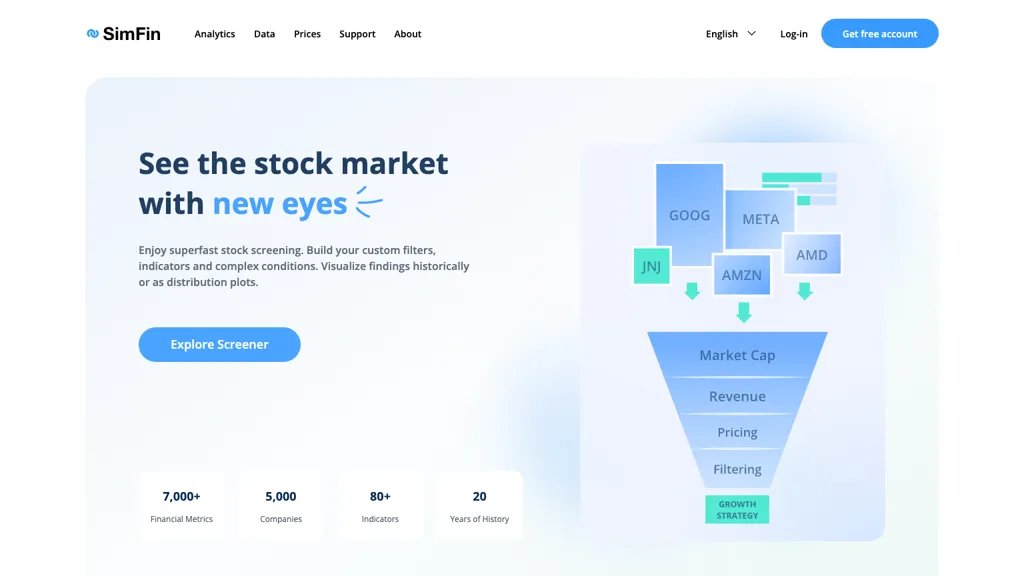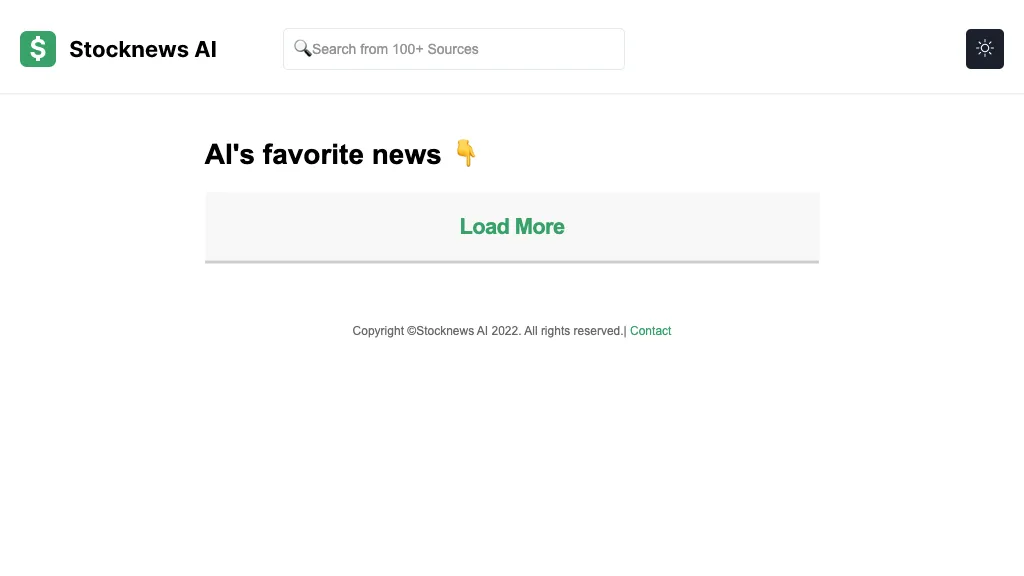20 Recommended Reasons For Selecting AI Stock Trading Platform Sites
20 Recommended Reasons For Selecting AI Stock Trading Platform Sites
Blog Article
Top 10 Suggestions For Evaluating The Effectiveness And Reliability Of Ai Stock Trading Platforms
To ensure that the software you select will provide accurate insights and forecasts, you must be able to assess its performance and accuracy. These are the top ten suggestions to evaluate these platforms effectively:
1. Backtesting Results
What to Look for What to Look For: Make sure the platform has backtesting features to see the way its predictions have been able to perform on data from the past.
What is important Backtesting is a way to confirm the AI model's accuracy by comparing predictions with actual outcomes from the past.
Look for platforms which allow you to customize backtesting parameters, such as duration and asset types.
2. Real-time Performance Monitoring
What to look for: Evaluate the performance of the platform under real-time market conditions.
What is important: The real-time performance of an application is a more reliable indicator than the backtesting of historical data.
Tips: Try a no-cost trial account or demo account to test the accuracy of market predictions against actual movement.
3. Prediction Error Metrics
What to look for: To quantify the accuracy of your forecasts, evaluate measures like mean absolute error (MAE) and root mean squared error (RMSE), and R-squared.
Why it is Important: These metrics give a measure of how accurate the forecasts are actual results.
Tip: Platforms that publicly reveal their data tend to be more transparent and reliable.
4. Rate of Succeed and Win Rate
What to Watch Out For: Check for the platform's success rate (percentage basing its success on accurate predictions) and its success rate.
What is important Why It Matters: A high success rate and win rate indicate a greater accuracy in predicting the future, and consequently, a greater chance of profitability.
There is no perfect system. Beware of websites which promise unrealistic win rate, e.g. 90% %+),.
5. Benchmarking against Market Indices
What to look for: Compare the platform's predictions and results to major market indices, like S&P 500 or NASDAQ.
What is important because it helps determine if the platform is performing better than (or is underperforming) the overall market.
Find consistency in performance, not only gains in a short period of time.
6. Consistency of Market Conditions
What to Look For What to Look For: Examine the performance of the platform in different market conditions (bull markets and bear markets, as well as high volatility).
Why It Matters The platform must be able of performing in all kinds of market conditions, not only when conditions are favorable.
Try the platform's forecasts during volatile periods and market downturns.
7. Transparency in Methodology
What to look for: Learn about the AI algorithms and models used (e.g. neural networks and reinforcement-learning).
What is important Transparency can help you assess the reliability and scientific rigor.
Beware of platforms that use a "black box" models that do not provide an explanation of how predictions were generated.
8. Tests by independent experts and User Reviews
What to Look For: Read user reviews and look for independent tests or third-party evaluations of the platform.
Why it's important The importance of independent reviews, tests and evaluations offer unbiased and unbiased insight on the platform accuracy and performance.
TIP: Check for reviews on forums such as Reddit, copyright or financial blogs.
9. Risk-Adjusted Returns
What to look for What to Look For: Assess the performance of your platform using risks-adjusted indicators such as the Sharpe Ratio or Sortino Ratio.
Why it is Important What are these metrics? They reflect the risk level taken to achieve returns, providing a more comprehensive view of performance.
Sharpe ratios (e.g. over 1) suggest a higher risk-adjusted rate.
10. Long-term record-breaking records
What to Look For: Evaluate the platform's performance over a period of time (e.g. 3 to 5 years).
Why is it important: Long-term performance provides a more reliable indicator than short-term results.
Do not use platforms that show only some short-term results or only show a few instances of success.
Bonus Tip Test with Demo Account
Use a demo account or free trial to test the platform's predictions in real-time without risking real money. It allows you to see the accuracy of predictions as well as their performance.
If you follow these guidelines, you can test the accuracy and performance of AI platforms for stock analysis and forecasting. Select one that's compatible with your trading needs and your risk tolerance. Always remember that no platform can be guaranteed to be 100% accurate, so using AI insights together with the results of your own research is usually the most effective approach. Check out the best her explanation for website tips including ai for stock trading, ai for investing, ai chart analysis, ai stock trading bot free, best ai stock trading bot free, ai for stock trading, stock ai, stock ai, ai for stock trading, stock ai and more.
Top 10 Ways To Evaluate The Speed And Latency Ai Analysis And Stock Prediction Platform
Latency and speed are critical aspects to consider when evaluating AI stock prediction and analysis platforms, specifically for active traders, algorithmic traders, as well as high-frequency traders. A delay of just milliseconds can be detrimental to trade execution. These are the top 10 tips for assessing the latency and speed of these platforms.
1. Real-Time data feeds can be used to determine the accuracy of your real-time data
Data delivery: Make sure that the platform can to transmit data in real-time with a minimum delay (e.g. less than a millisecond).
Closeness of the data source: Find out if servers are located near major exchanges.
Data compression: Check to determine if there are effective methods for data compression that can increase the speed of delivery of data.
2. Test the speed of execution for trades
Order processing time is the speed of your order that will be processed and executed through the platform.
Direct market access: Make sure that the platform allows direct orders to be made to the exchange.
Execution reports: Find out whether the platform has detailed execution reports, including timestamps for order submission, confirmation, and fill.
3. Examine the Receptivity of Platforms
User interface (UI speed) Find out how fast the platform responds to inputs, like clicking buttons, or loading charts.
Chart updates: Make sure you check if charts and visualizations update in real-time without lag.
Performance of mobile apps: When using a mobile app, ensure that it runs as fast as the desktop version.
4. Check for Low-Latency infrastructure
Locations of the servers The platform should utilize high-speed, low-latency servers that are situated near major exchanges or financial hubs.
Look for colocation alternatives. These services allow you to host your algorithm near to the exchange.
High-speed Networks: Confirm the utilization of fiber-optic, high-speed network, or other technology with low latency.
5. Test simulation speed and backtesting
Test the platform's capacity to analyze and process the historical data.
The latency of the platform should be low enough to allow for live simulations of trades in real time.
Parallel processing (or distributed computing) Learn if a platform uses the concept of parallel processing or distributed processing in order to accelerate complicated calculations.
6. Assessment of API Latency
API response times: Determine the speed at which APIs can respond to requests (e.g. retrieving information from the platform, or placing orders).
Rate limits. Examine the API's rate limits in order to avoid any delays when high-frequency trading.
WebSocket support: Determine if the platform uses WebSocket protocols for real-time and low-latency streaming of data.
7. Test the stability of the platform under load
Simulation of scenarios involving high volume trading to determine whether the platform is reliable and stable.
Market volatility: Make sure the platform can manage price fluctuations in times of high volatility.
Find out whether there are any tools available for testing strategies in the most extreme of circumstances.
8. Examine the network and connectivity
Internet speed demands. Check that your connection speed is sufficient to reach the recommended speed of the platform to ensure the best performance.
Redundant connections: Check if the platform has redundant internet connections to prevent downtime.
VPN latency. Check to see if you're using a VPN to determine if it causes latency.
9. Check for Speed Optimisation Features
Pre-trade analytics: Ensure the platform has pre-trade analysis to improve order routing and execution speed.
Smart order routing: Determine whether your application is using SOR to locate the most cost-effective and fastest execution site.
Monitoring latency: Verify if the platform provides tools for monitoring and analyzing latency in real-time.
Review Benchmarks and User Feedback
User reviews: Check for feedback from users on the site to gauge the speed and latency of the platform.
Third-party Benchmarks: Find independent benchmarks to compare the speed of a platform to its competitors.
Case studies: Check whether the platform has case studies or testimonies which highlight the features that are low-latency.
Bonus Tips
Trial time: You can make use of a demo or trial period to test the performance and latency of the platform.
Customer support: Ensure the platform provides assistance with issues related to latency, or optimization.
Hardware specifications. Make sure the platform is compatible with the hardware you are using like high-performance computers.
The following tips can assist you in evaluating the speed of AI trading platforms that predict/analyze stock prices. You will be able select a platform for trading that best meets your needs in trading and reduces any delay. A low latency is essential for algorithmic and high-frequency traders. Even minor delays can have a huge impact on the profitability. Take a look at the most popular the advantage for ai share trading for blog recommendations including chart ai trading, ai stock analysis, ai share trading, ai stock investing, chart analysis ai, ai stock predictions, stocks ai, ai stock predictions, ai options trading, ai share trading and more.